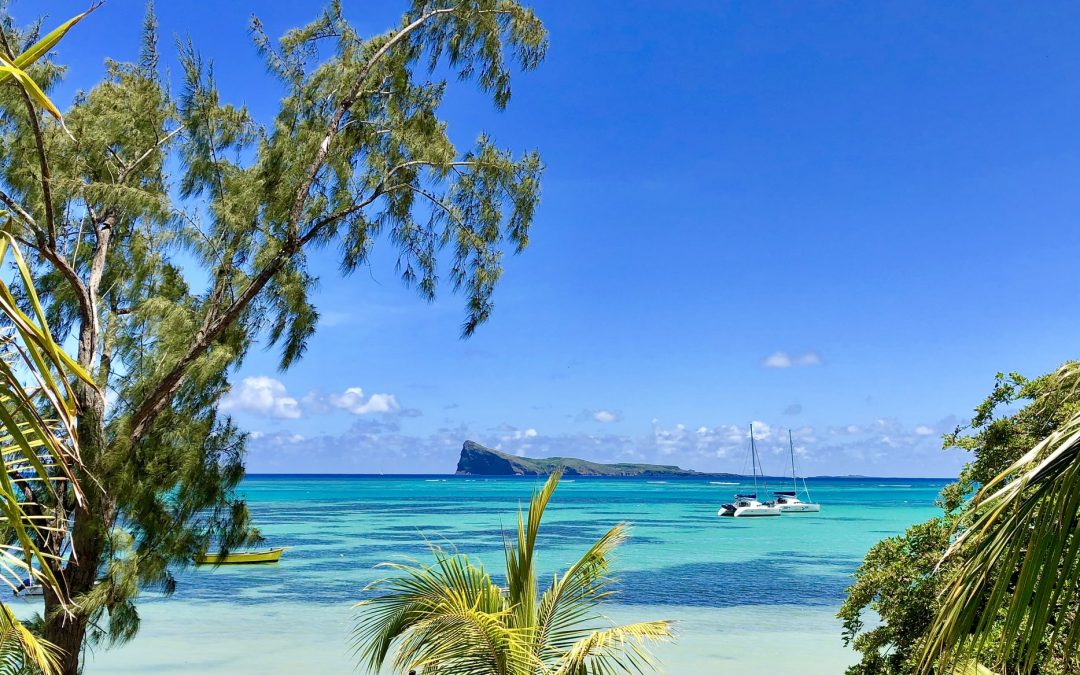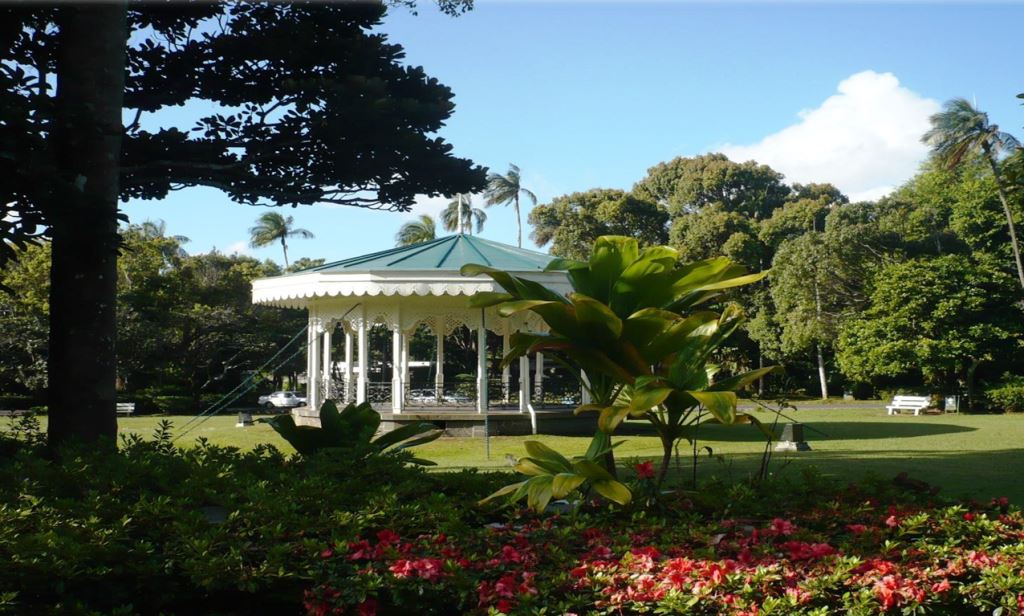No Results Found
The page you requested could not be found. Try refining your search, or use the navigation above to locate the post.
The page you requested could not be found. Try refining your search, or use the navigation above to locate the post.
Features information that is relevant to travellers who are thinking about and actively planning a visit to Mauritus.
There are some good places to have a nibble in the major areas along the east coast of Mauritius.
Among the best pickings are in Trou D’eau Douce, such as Chez Tino which serves up traditional Mauritius fare at reasonable prices. For good seafood, Resto 7 has a nice menu – try the lobster if you can. Another premium sea food choice in Trou D’eau Douce is Le Four a Chaud.
Belle Mare also has a couple of places to stop off for a meal. Emperor serves up some good Chinese cuisine, and La Grisee Mer is a sea food restaurant which offers some good standard seafood.
Ile Aux Cerfs is in fact a separate island (still owned by Mauritius) about twenty minutes by boat from Trou d’Eau Douce and it has some splendid isolated beaches that are well worth a visit.
The diving here is among the best to be found anywhere in Mauritius. You can also find a couple of good restaurants dotted along this small island to have lunch at.
No tags for this post.The Eastern region of Mauritius is known for reasonably good beaches, but there aren’t as many well known resorts as in the other areas of Mauritius. The most prestigious resorts tend to be around the Belle Mare and Trou D’eau Douce areas.
Bellle Mare is one of the best places in the Eastern region of Mauritius for diving. Lots of holiday makers to Mauritius come here for the good diving facilities – there’s even opportunity to enjoy undersea walks here (provided by a handful of the dive operators around).
There are a couple of wonderfully luxurious resorts here – Belle Mare Plage is a five star golfing resort, and Beau Rivage is another five star resort with airy rooms and a very good spa.
Those with a somewhat lower budget still have plenty of places to choose from. There’s Coral Beach which has various studio apartments that are cheap by Mauritius standards. A little more up market, yet still economical is the three star Palmar Beach Hotel which has good facilities for a smaller hotel.
Fishing towns are a dime a dozen in Mauritius. One of the places many holiday makers to the east side of Mauritius tend to stay in is Trou D’eau Douce.
If you’ve got a good budget for your holiday to Mauritius then Le Trouessrok is a five star hotel that is the absolute pinnacle of luxury. Other hotel choices along Trou D’eau Douce include Le Tropical, and Cilaos Beach Resort.
There isn’t too much else for tourists to look at in the Eastern area of Mauritius, though some tourists like to visit Centre De Flacq, a pleasant market town with some nice restaurants.
No tags for this post.The Central Mauritius region is known for two major areas – the Black River Gorges (National Park) and Curepipe.
There are other villages spread throughout the centre but the above two tend to be the major destination for tourists on holiday to Mauritius.
The National Park allows for a good deal of hiking and there are some splendid mountain scenes to be taken in here – and the National Park is within relatively easy reach from most areas of Mauritius.
This very unique region of Mauritius has some incredible mountains, spectacular scenery including gushing waterfalls, and represents great opportunities for hiking and nature lovers.
A scenic drive is very much recommended within the National Park and you can go on an organised tour, or even hire a car to take you for the day. The resort you stay at should tell you how you can book a car or excursion to visit.
There’s a tourist information centre available for holiday makers who wish to explore the Park further, and go on for hikes.
It’s also possible to take a quad bike tour within the National Park – his very unique region of Mauritius has
One of the best vista points from within the park is the majestic Central Plateau where it’s possible to catch awesome panoramic views over the landscape.
No tags for this post.
You may think that Mauritius is all about longing in front of a gorgeous beach and enjoying all inclusive service 24 hours a day – there is that, but if you’re considering it as a holiday destination you ought to know that there’re much more to it than just that.
There are some awesome natural wonders, as encapsulated by the national parks of Black River Gorges (southwest Mauritius), Bluebay and Balaclava (Western Mauritius). Here you can enjoy the splendid nature that Mauritius offers the tourist and enjoy activities such as hiking and bird watching among others.
And no experience to Mauritius is complete without a visit to Port Louis – one of the most vibrant spots within the island, and one that’s simply crawling with wonderful restaurants, streets bustling with busy shops and some homely bars and café’s. As you may expect, Port Louis is actually the economic core of Mauritius, being the country’s business district.
No tags for this post.Mauritius has an enviable climate – temperatures rarely dip below 16c (and that’s in the heart of it’s winter). In contrast, at the heights of summer, the temperature can climb to the mid thirties. There can also be a significant difference in temperature based on where on the island you find yourself – Mauritius has a varied landscape with a mix of mountains and wetlands, all of which see different temperatures and rainfall.
In the past Mauritius has been hit by cyclones – while this is rare, the cyclone season tends to be between December and March. During this time, Mauritius can face quite a few rain showers. Mauritius also has what’s known as a micro climate – this means that there could be severe rain at one point, and absolute sunshine just a km or so away.
Despite the above, generally Mauritius enjoys a fairly constant climate which means that it’s a holiday destination which is good any time of the year.
Of course, these are average temperatures – there tend to be differences based on your location within Mauritius. For example, North tends to enjoy slightly higher temperatures than the East and South and the lowest average temperatures are within the centre of the island.
When rain falls in Mauritius it tends to be for brief periods. The rainy season (Dec to Mar) tends to have the most rainfall. The wettest months going on averages are January to March where you can expect between seven to nine rainy days (where rainfall is over 5mm). August to November tend to have the lowest rainfall with as little as two rainy days of 5mm+ rainfall.
On the surface of things, it seems that Mauritius is best for honeymooners and couples looking for a romantic getaway. That’s certainly true, but Mauritius offers something for everyone and every type of traveller. For example, families are very well catered for with several top and medium class resorts offering great kids clubs and family activities.
Furthermore, crime tends to be very low in Mauritius, and there aren’t many dangers that could threaten to ruin your stay (or take your life).
Nature-lovers and those that enjoy nature have plenty to choose from – there are National Parks within easy reach of any point on the island, and the abundance of crystal clear tropical waters makes diving and snorkelling a very rewarding experience. Most resorts also offer a host of water activities from the standard and mundane (glass bottom boat rides) and the fascinating (dolphin cruises) to the downright spectacular (deep sea fishing).
Mauritius may not be the ideal place for budget conscious travellers to explore – but it’s one of the very best places in the world to experience a true slice of paradise at an affordable level. While some of the most classy four and five star resorts command huge room rates, there are also several budget choices that makes Mauritius a wonderful luxury destination for travellers with tighter purse strings.
You can eat and drink like a King in Mauritius and there are some great unique and tasty gastromical treats on show. Here are some of the most popular Mauritius eating specialities:
These are just some of the more exciting options available – many of the good Mauritius holiday resorts have fine dining with multiple restaurants. If you’re on AI or Full/Half board, you can typically eat in the buffets that are served in many resorts nightly. There are also many independent restaurants to get a more authentic experience scattered over many of the larger towns in Mauritius. One things for sure thought – expect to put on a few pounds when you get back from your Mauritius holiday.
While you’re touring and out and about along the streets & markets of Mauritius, you’ll find there are a lot of street stalls that sell food dishes. You can get a lot of the staples such as pigeon caca, biryani and lots more. These tend to be tasty and cheap, but if you have a delicate stomach then you may want to give this a miss.
No tags for this post.
Curepipe is by far one of the most densely populated areas within Central Mauritius, and in fact the country as a whole. It has an excellent selection of shops, restaurants and amenities, so it’s no wonder that many holiday makers to Central Mauritius choose this location to stay.
Because of it’s relatively high altitude, Curepipe often experiences more rain and cooler temperatures than many other places within Mauritius.
Despite being a relatively large town, there aren’t exactly an abundance of hotels and resorts to stay at within Curepipe. Accommodation within this central Mauritius location is limited to a couple of uninspiring guest houses and hotels such as Auberge de la Madelon and the Shanghai.
As a result, Curepipe tends to be a more popular base for back packers and budget travellers looking to tour Mauritius on the cheap.
There are certainly many better eating options than sleeping ones in Curepipe.
For a place that serves up sizzling meat dishes and succulent burgers of different varieties try Manhattan. If you’re looking for a more upmarket experience, La Potiniere offers classy French food which may be a strain on the credit card – not one for the budget conscious though.
Curepipe makes a nice town to explore – there are also some nice shopping regions within the area, some of which have a very western feel. The pick of these are the Sunsheel Centre and Curimjee Centre. There are also some pleasant bookshops and banks available if you need to exchange some cash.
There’s plenty more sights too – Botanical Gardens for example is a pleasant place to have a stroll and is a keen picnic spot for the locals. Trou Aux Cerfs is another point of interest – a volcanic crater that’s very popular with holiday makers to the central area of Mauritius.
There are also some notable places to visit in and around Curepipe – the obvious place to visit is Black Gorges National Park – use it as a base to explore the National Park.
Other places nearby that are make for excursions for Mauritius tourists include Rose Hill, Moka and Quatre Bornes. Between them they have a decent mix of restaurants and places of interest. For example the Creole Buildings on Rose Hill are worth a visit, and Floreal has the textiles museum.